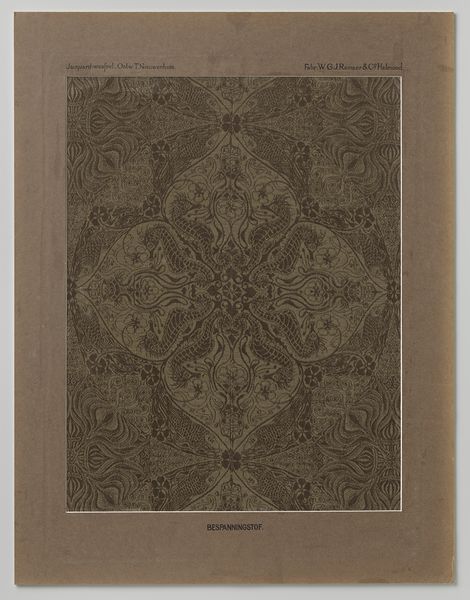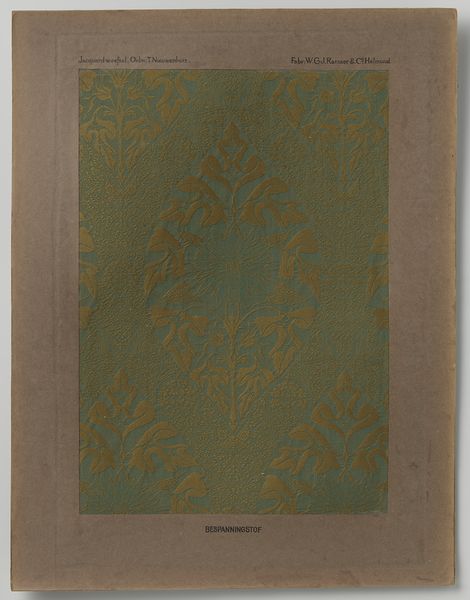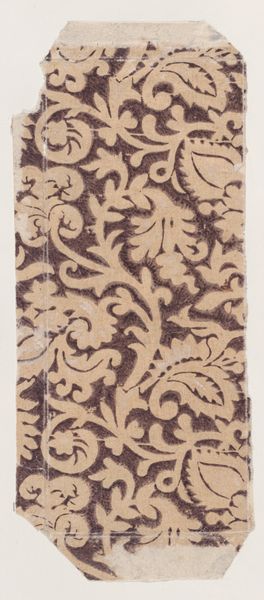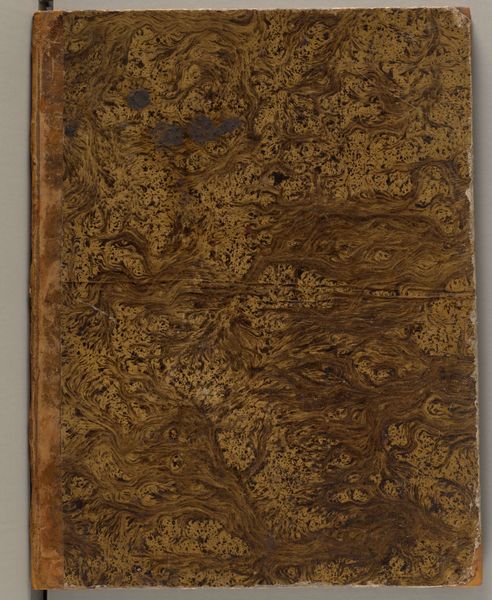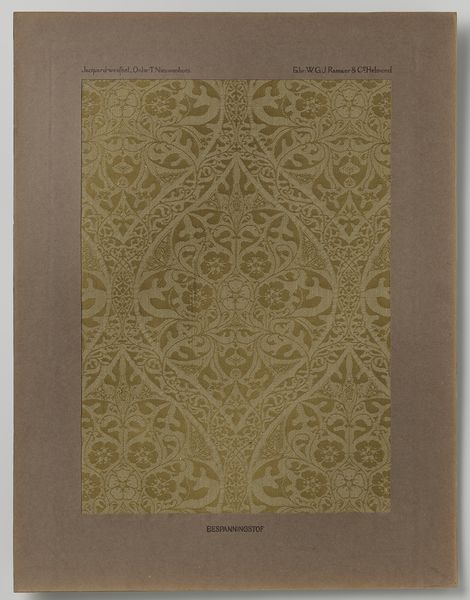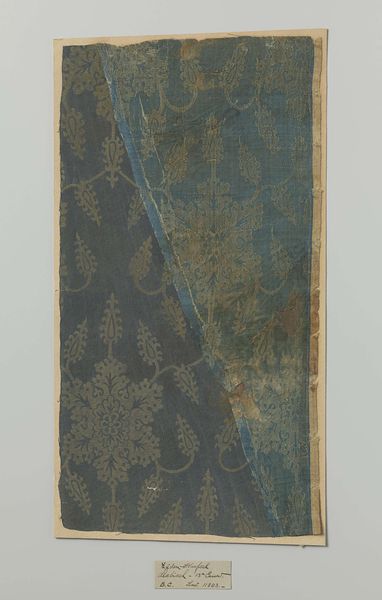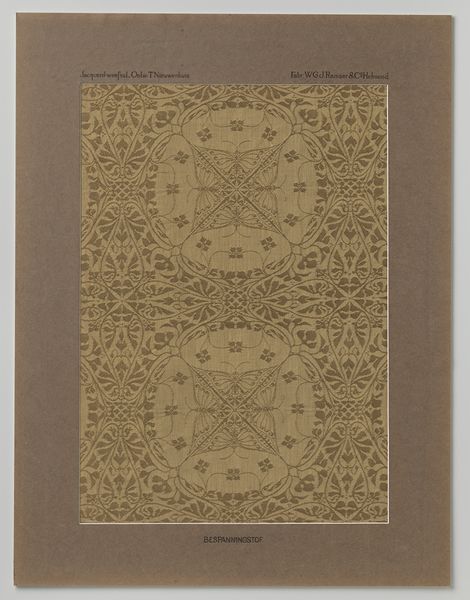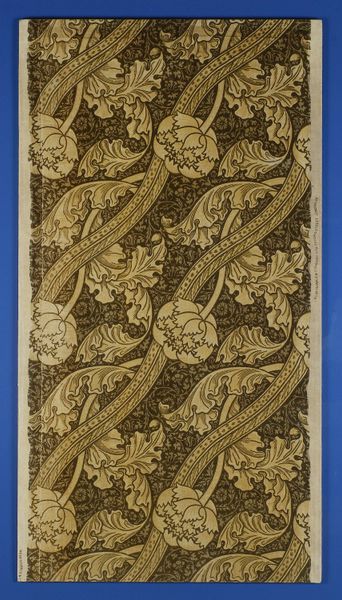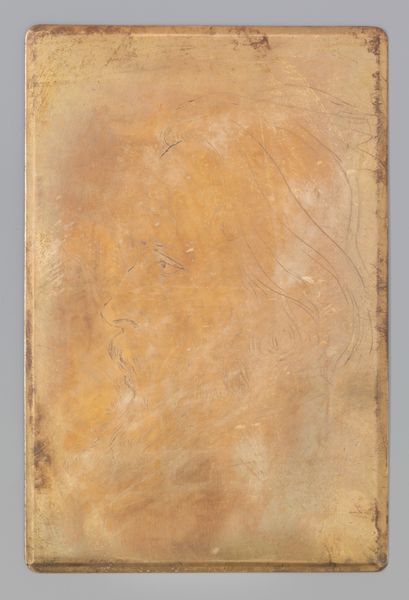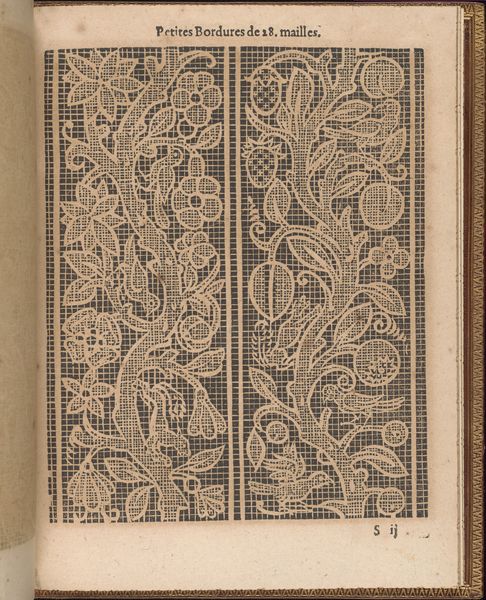
Fragment van een overgordijn van bedrukte cretonne met zwanen en lissen c. 1900
0:00
0:00
print, textile
#
art-nouveau
# print
#
textile
#
decorative-art
#
imprinted textile
Dimensions: height 105.0 cm, width 35.0 cm
Copyright: Rijks Museum: Open Domain
Curator: This textile fragment at the Rijksmuseum, made around 1900, showcases a printed cretonne with a stylized design of swans and irises. It's believed to have been part of a larger over-curtain. Editor: My first thought is how incredibly faded the colors are. It gives the entire piece a ghost-like quality. The design is visible, but it feels like peering into the past. Curator: The fading contributes, I think, to its power. Cretonne was a popular, relatively inexpensive, fabric used widely in domestic settings at the time, bringing art and nature motifs into the homes of ordinary people. The symbols chosen tell us something. The swan for fidelity and purity. The iris for faith, hope and wisdom. Together, these signal an ambition towards a wholesome domestic life. Editor: Absolutely. The swans and irises arranged so rhythmically within the design seem like archetypes rather than just decoration. Do you think the repetitive element was particularly comforting to the bourgeoisie? Almost like a visual mantra in their homes? Curator: Comfort certainly played a part. There was a strong desire for order and beauty in the domestic space. Patterns like this one offered an escape from the increasingly industrialized world outside. The stylized natural forms are classic Art Nouveau. But I wonder, what did this pattern *mean* when mass-produced, in different social environments? How much control over the deeper meaning does the artist retain in the marketplace? Editor: An interesting question. One could argue mass production democratizes the visual vocabulary. The message, I mean, reaches a far wider audience and might then morph through use in a variety of settings. Did owning such an item suggest a specific cultural or even political persuasion for its original owner? Curator: That's where history is so useful. By looking at other household objects from the era, like wallpapers and ceramics, we can see the rising demand for mass-produced decorative objects, all echoing these same archetypal themes. Art Nouveau was an explicitly modern, anti-establishment style, remember, even as it got tamed into these repetitive, mass-produced fabrics. Editor: So, despite its potentially calming influence, it originally possessed a rebellious undercurrent? Intriguing. This small fragment really encapsulates so much about the aspirations and anxieties of a period, doesn't it? Curator: Exactly. Visual culture, like any other kind, contains memory. These symbols continue to exert influence over tastes.
Comments
No comments
Be the first to comment and join the conversation on the ultimate creative platform.
